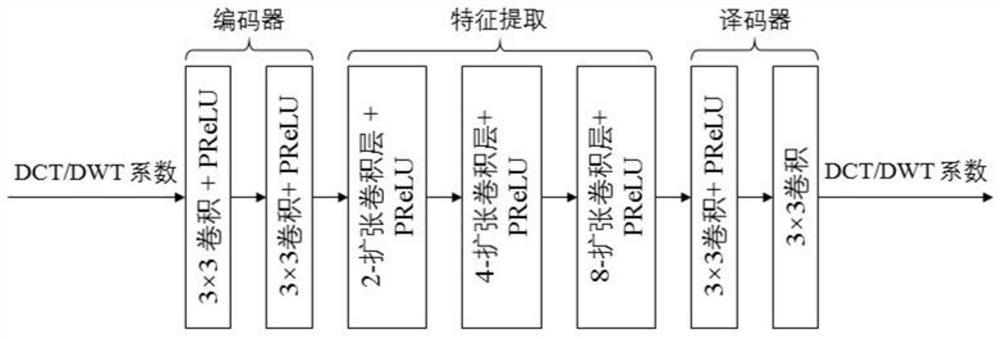JPEG image compression artifact elimination algorithm based on cascade residual coding and decoding network
An image compression, encoding and decoding technology, applied in the field of image processing, can solve problems such as limiting the application range of algorithms, and achieve good performance
- Summary
- Abstract
- Description
- Claims
- Application Information
AI Technical Summary
Problems solved by technology
Method used
Image
Examples
Embodiment Construction
[0035] The present invention will be further described below in conjunction with the accompanying drawings.
[0036] Such as figure 1 As shown, a kind of JPEG image compression artifact elimination algorithm based on cascaded residual codec network of the present invention comprises the following steps:
[0037] Step 1: Divide the test image into a series of overlapping image blocks, estimate the QF value of each image block through the QF prediction network, and use the local standard deviation (LSD) to locate the top 20% to 50% of each image block The rounded mean of the QF values is taken as the overall QF value of the test image.
[0038] The structure of the QF prediction network is shown in Table 1. In the training phase, use the 45,000 images of the MS-COCO database training set to train the QF value prediction network. The specific method is: use a random integer value (ie QF) for the brightness channel of each image (ie, the Y channel in the YCbCr space) For comp...
PUM
 Login to View More
Login to View More Abstract
Description
Claims
Application Information
 Login to View More
Login to View More - R&D
- Intellectual Property
- Life Sciences
- Materials
- Tech Scout
- Unparalleled Data Quality
- Higher Quality Content
- 60% Fewer Hallucinations
Browse by: Latest US Patents, China's latest patents, Technical Efficacy Thesaurus, Application Domain, Technology Topic, Popular Technical Reports.
© 2025 PatSnap. All rights reserved.Legal|Privacy policy|Modern Slavery Act Transparency Statement|Sitemap|About US| Contact US: help@patsnap.com



